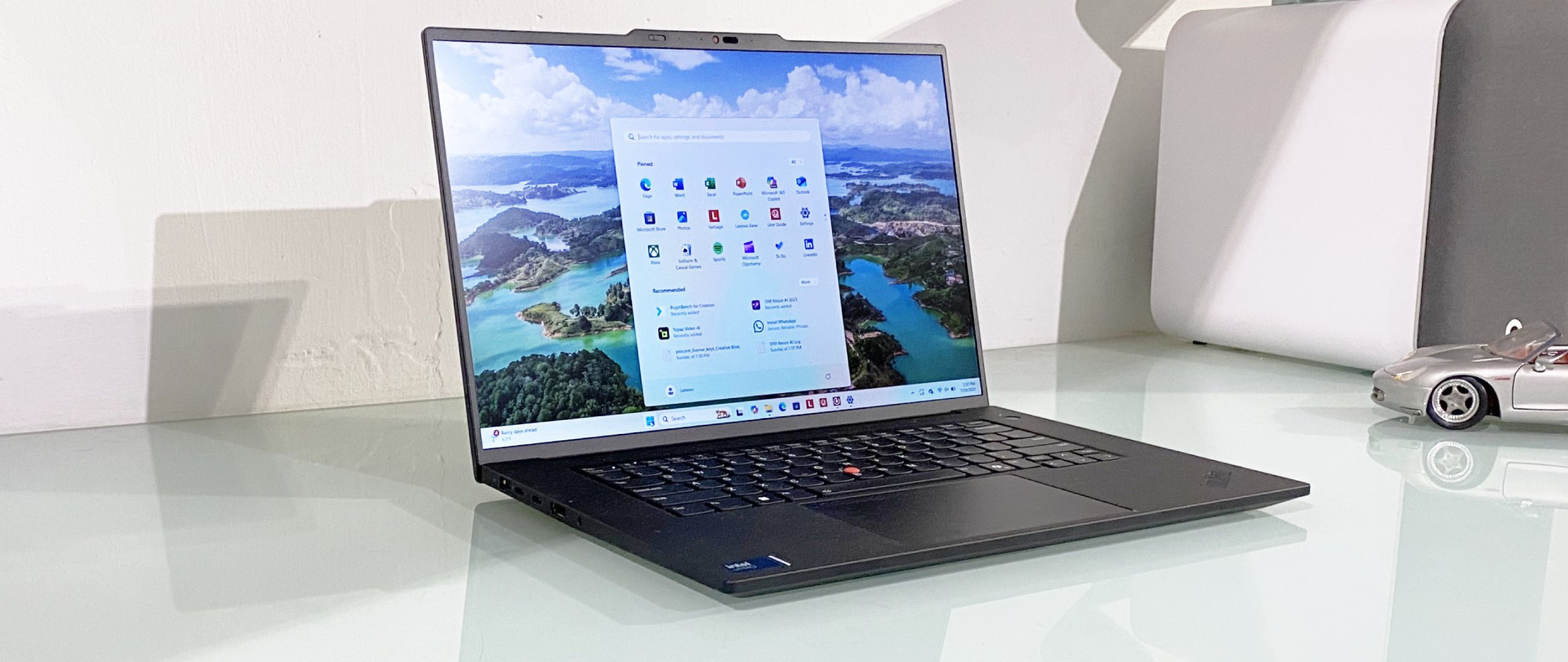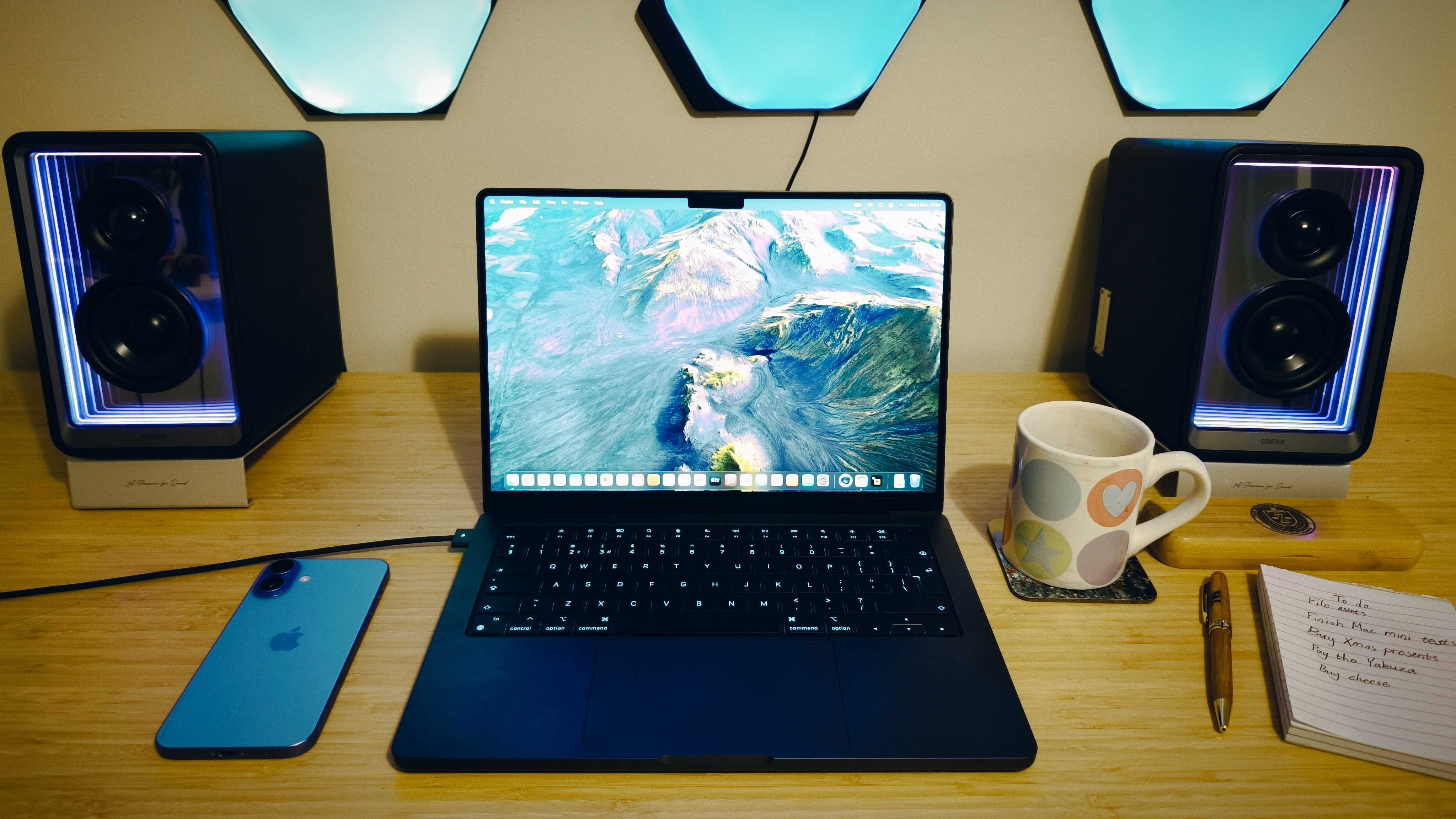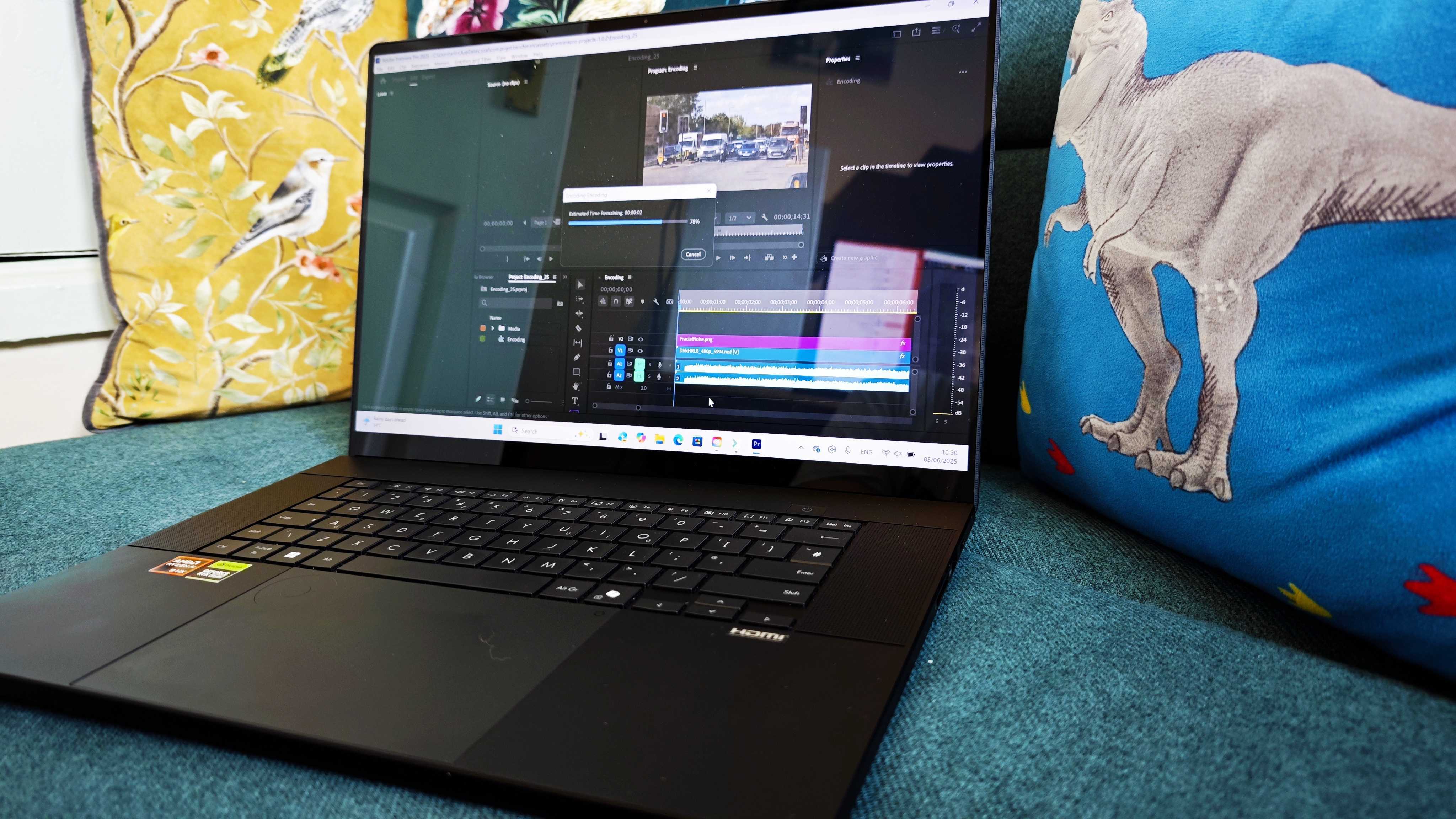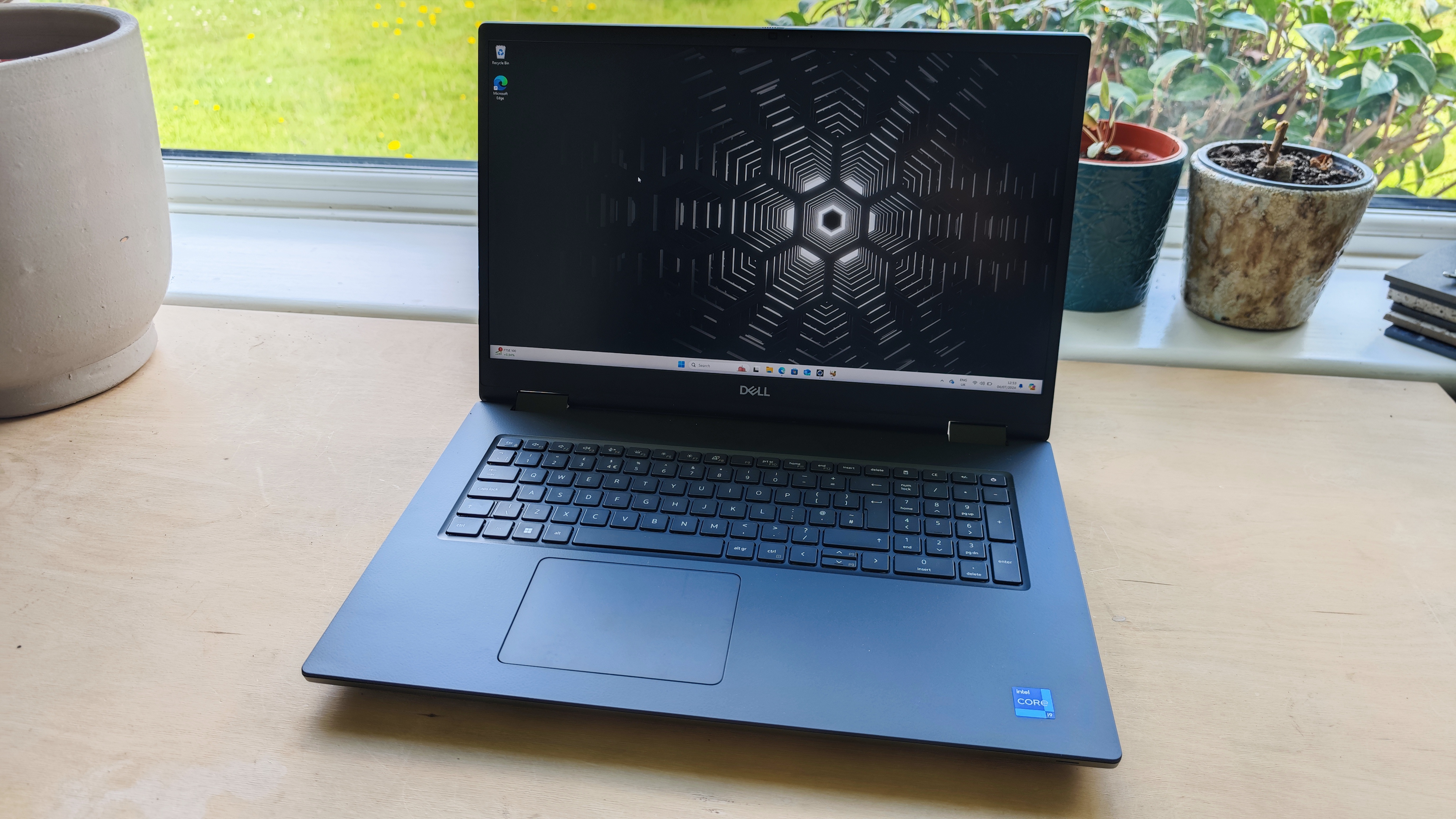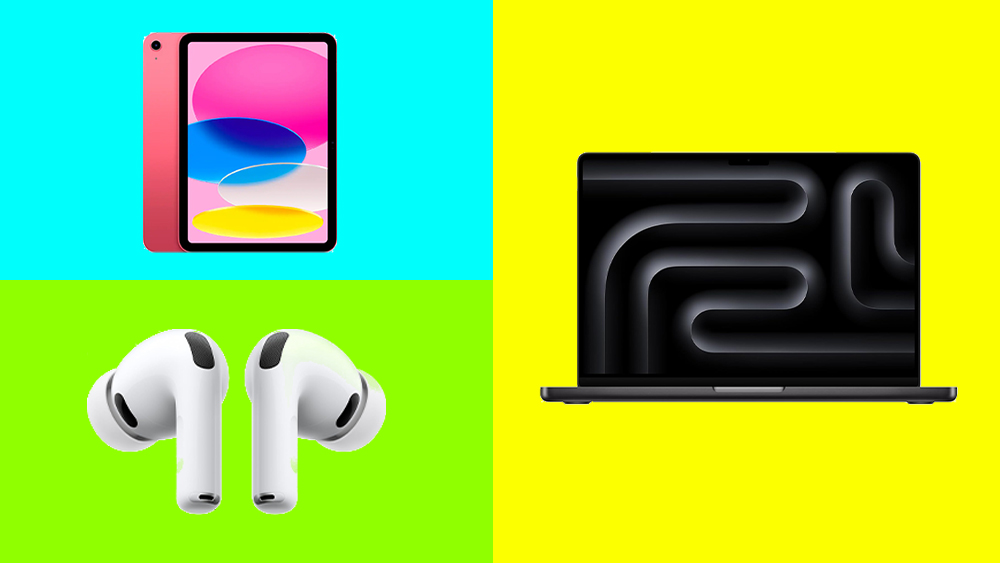Our Verdict
Lenovo's latest 16-inch mobile workstation, the Lenovo Thinkpad P1 Gen 7, is a beautiful slab of quality engineering with a strong professional feature set and stellar battery life. But it's incredibly expensive and offers mediocre GPU and NPU performance, especially for the price.
For
- Fantastic build quality
- Strong pro feature set
- Incredible battery life
Against
- Mediocre GPU and NPU
- Disappointing screen
- Very expensive
Why you can trust Creative Bloq
Lenovo's laptops are nothing if not reassuringly familiar, no-nonsense machines that major on functionality and quality. That applies to the new Lenovo ThinkPad P1 Gen 7 as much as any previous model. The question is, does that traditional vibe cut it in an age of AI-accelerated applications and demanding multimedia? In short, can this Lenovo portable compete with the best laptops for graphic design, digital art or even 3D modelling?
On paper, the Lenovo ThinkPad P1 Gen 7 certainly ticks a lot of boxes. There's a modern Intel processor with an NPU for AI acceleration, not to mention a discrete professional-class Nvidia GPU. Add in plenty of RAM, a quick SSD, a generously proportioned 16-inch display, good connectivity and a hefty 90Wh battery, all crammed into a pretty slim chassis, and you have a strong all-round proposition.
Of course, the devil is often in the detail with laptops for creative pros, and the precise configuration tested here doesn't quite nail it for all creative workflows. We'll get into the specifics momentarily, but most obviously, the GPU spec and display option will leave some users wanting more. Hold those thoughts.
Key specifications
CPU: | Intel Core Ultra 7 165H |
NPU: | Intel AI Boost, 10 TOPS |
Graphics: | Nvidia RTX 1000 Ada 6GB |
Memory: | 32GB LPDDR5x 7467MT/s (CAMM2) |
Storage: | 1TB PCIe 4.0 SSD |
Screen size: | 16-inch |
Screen type: | IPS |
Resolution: | 1,920 x 1,200 |
Refresh rate: | 60Hz |
Colour gamut (measured): | 100% sRGB |
Brightness (measured): | 400 nits |
Ports: | 2x USB-C Thunderbolt 4, 1x USB-C, 1x USB-A, HDMI 2.1, SD Express 7.0 card reader, 3.5mm audio |
Wireless connectivity: | Intel WiFi 7, Bluetooth 5.4, NFC |
Dimensions: | 17.05 x 354.40 x 241.20mm |
Weight: | 1.82kg |
Design, build and display

• Fantastic build quality
• Understated design
• Strong feature set
Undoubtedly, design and engineering are where the Lenovo Thinkpad P1 Gen 7 really delivers. To be sure, this is a sober-suited laptop. But it oozes quality thanks to a magnesium frame and aluminium top and bottom chassis covers. In short, it's beautifully built and feels extremely solid.
At the same time, it's reasonably slim and portable, with minimal bezels around the 16-inch display. Starting at 1.82kg, depending on configuration, it's not exactly a flyweight. But, again, for a 16-inch model, that's pretty good going. For context, the admittedly more powerful Apple MacBook Pro 16 starts at 2.14kg.
Likewise, you get a generously proportioned and responsive trackpad, plus one of the best keyboards in the business, which sports a reassuringly solid bed and a quality feel to the keystrokes. Lenovo's signature pointing stick is also included. Much like other aspects of the design, it dates back to the origins of ThinkPad under the IBM brand. It's an esoteric inclusion, but one that a certain niche of ThinkPad fans will be glad remains.
Connectivity is well catered for via a pair of USB-C Thunderbolt 4 ports, along with a further USB-C socket, USB-A, HDMI and an SD Express 7.0 card reader. DisplayPort is also catered for via alt-mode supported by both USB-C Thunderbolt 4 ports. Up top, there's a 5MP webcam which supports Windows Hello and has a physical shutter for security. Speaking of security, the power button includes a fingerprint reader.
Daily design news, reviews, how-tos and more, as picked by the editors.
All told, this is a high-quality, well-designed and intelligently specified laptop. It's clearly been designed to get proper work done and to be pleasant and reliable to use when doing so. In short, it's a laptop for grown-ups.
Design score: 4/5
Features
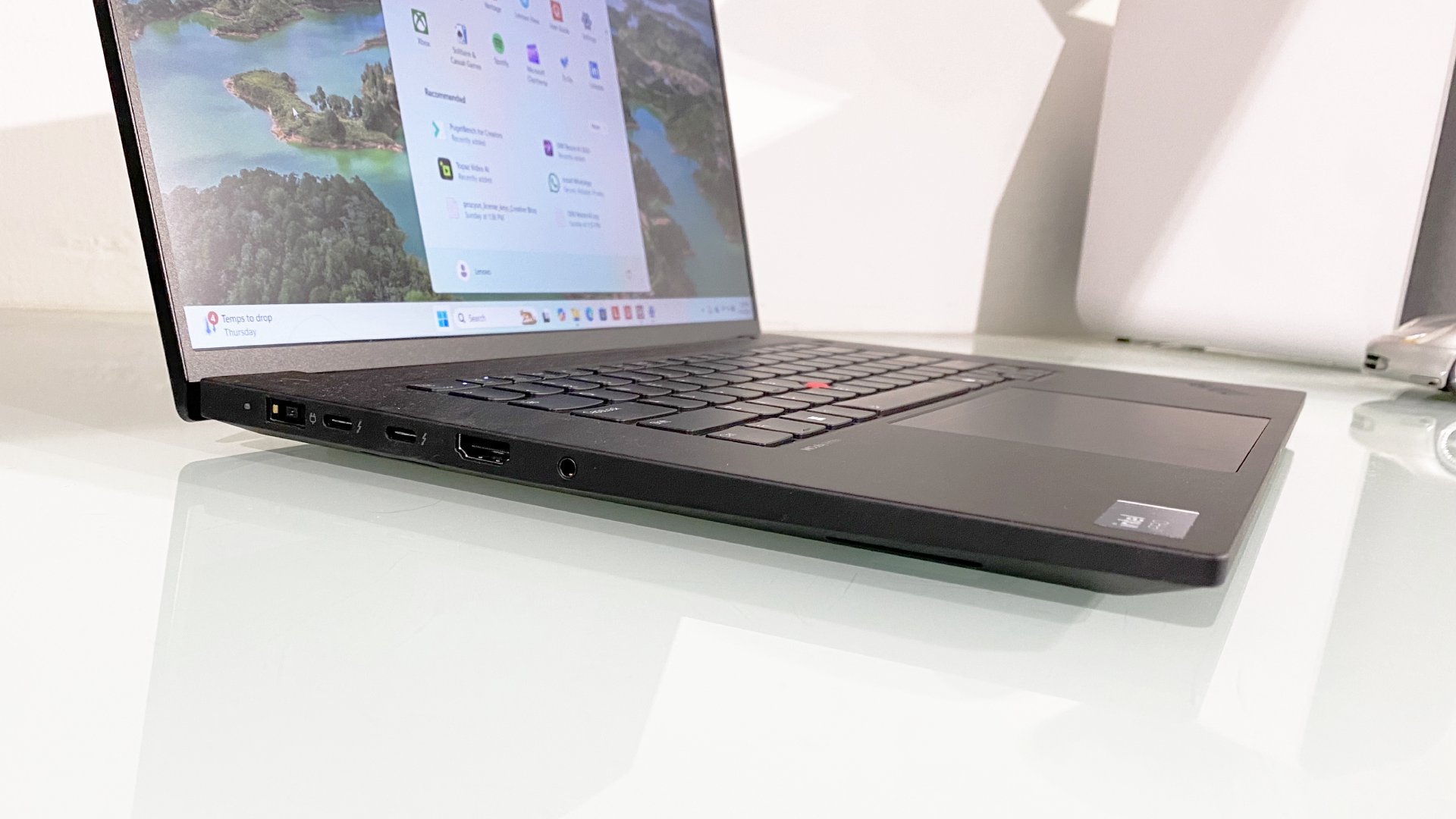
• Strong pro-grade feature set
• Last-gen CPU and graphics
• Disappointing screen as tested
For the Lenovo Thinkpad P1 Gen 7, Lenovo has stuck with Intel's Meteor Lake generation of CPUs, rather than the newer Lunar Lake chips. In terms of raw CPU performance, the Intel Core Ultra 7 165H specified here has plenty of grunt thanks to six Performance and eight Efficient cores. However, the performance of the Meteor Lake NPU is a little lacking.
Rated at 10 TOPS, it doesn't qualify on its own for Microsoft's Copilot+ AI PC standard, which requires an NPU with at least 40 TOPS of performance, something not only Intel's own Lunar Lake chips offer, but also AMD's latest Ryzen AI APUs and Snapdragon X Arm-based chips can also deliver.
However, this Lenovo also has a discrete Nvidia GPU to up not only this Lenovo's AI ante, but also its graphics performance. The problem is that the configuration tested here gets the entry-level professional-grade GPU in the RTX 1000 Ada. It's based on the same AD107 chip as the RTX 4050, so it's a very modestly specced GPU by Nvidia's standards.
You can opt for an RTX 4070 or RTX 3000 Ada. Those still aren't truly high-performance GPUs, but they do lift the GPU memory from 6GB to 8GB and add more CUDA and Tensor cores for AI and graphics processing.
Another arguable configuration misstep is this model's mere 1,920 x 1,200 resolution 16-inch IPS display. It's rated at 400 nits and comes X-Rite calibrated from the factory. But the optional 2,560 x 1,600 resolution 500 nit IPS and 3,840 x 2,400 OLED touchscreen alternatives that are also available are far more appealing, especially for creative workflows like image and video editing.
That said, this configuration does at least come with plenty of RAM at 32GB, plus the ability to upgrade later to fully 64GB if required. The 1TB SSD isn't hugely generous. But, again, you can go up to 8 TB at the point of sale.
Elsewhere, there's a hefty 90Wh battery, two speakers, dual far-field microphones, Wi-Fi 7 and Bluetooth 5.4. Ultimately, if there's a problem here, it's the specific configuration of this review machine. You can spec this laptop up to cater for most creative needs.
Feature score: 4/5
Benchmark scores
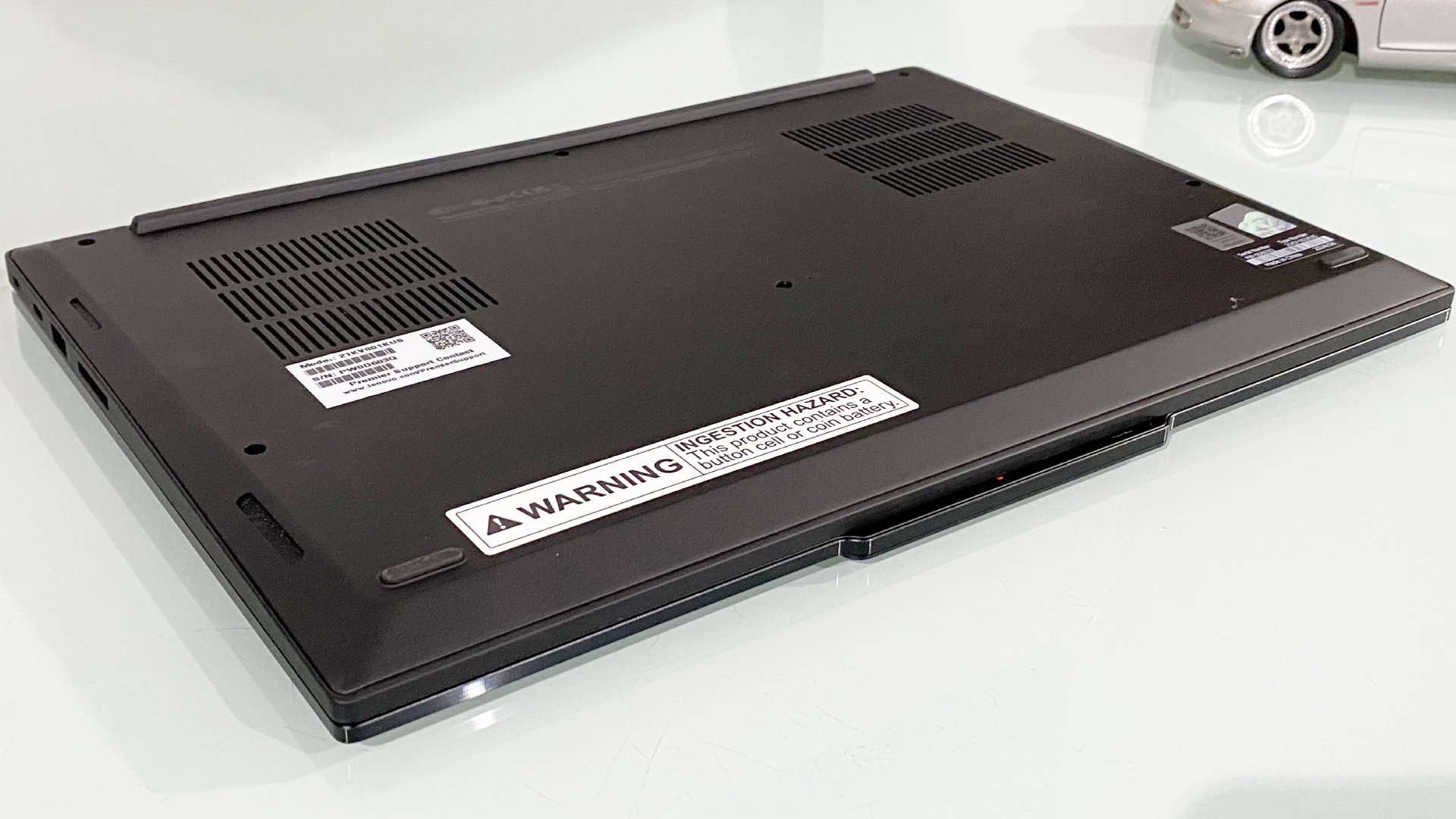
We test every one of our laptops using the same benchmarking software suite to give you a thorough overview of its suitability for creatives of all disciplines and levels. This includes:
• Geekbench: Tests the CPU for single-core and multi-core power, and the GPU for the system's potential for gaming, image processing, or video editing. Geekbench AI tests the CPU and GPU on a variety of AI-powered and AI-boosted tasks.
• Cinebench: Tests the CPU and GPU's ability to run Cinema 4D and Redshift.
• UL Procyon: Uses UL Solutions' Procyon software suite to test the system's ability for AI image generation in Stable Diffusion, its Microsoft Office performance and its battery life in a looping video test.
• Topaz Video AI: We use Topaz Video AI to test the system's ability to upscale video and convert video to slow-motion.
• PugetBench for Creators: We use the PugetBench for Creators benchmarking suite to test the system's ability to run several key tasks in Photoshop and Adobe Premiere Pro, as well as its performance when encoding/transcoding video.
• ON1 Resize AI: Tests the system's ability to resize 5 photos to 200% in a batch process. We take the total time taken to resize the images and divide by 5.
Performance
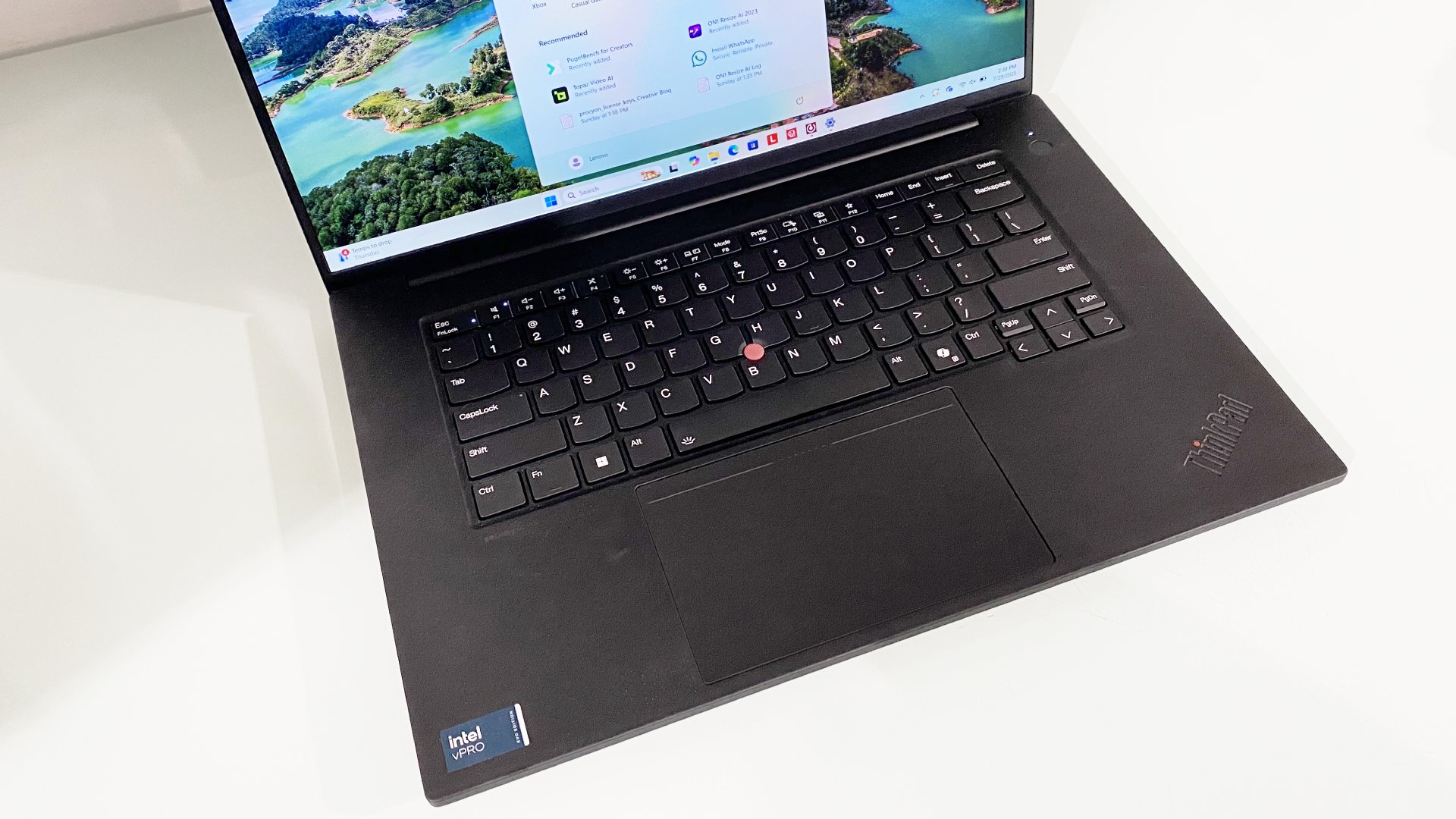
• Strong CPU performance
• Entry-level discrete Nvidia GPU
• Stellar battery life
For the most part, the Lenovo ThinkPad P1 Gen 7's core components are known quantities, and they don't throw up many surprises. The Lenovo Intel Core Ultra 7 165H is a good all-round mobile performer and will turn its hand to most creative tasks, be that image editing or video encoding. It's also well complemented by 32GB of RAM.
The Nvidia RTX 1000 Ada GPU is less of an unambiguous success, however. For starters, it only has 6GB of VRAM and a 96-bit bus. So, both GPU memory capacity and bandwidth are at a premium. Stable Diffusion, for instance, generally requires at least 8GB of VRAM and 12GB or more is optimal for generating higher resolution images. Moreover, the RTX 1000 Ada GPU itself is hardly a beast, either.
To be sure, it's better than running on integrated graphics. And in tests like Topaz Video AI upscaling, it'll show a clean pair of heels to, say, Apple's entry-level M4 chip. But if your workflows hinge on strong GPU performance, there are better options, including the more powerful GPU options Lenovo offers in this very laptop.
Pure NPU performance is also a weak point. Exactly how important that is will depend on your specific needs. Currently, there aren't very many professional or creator apps that depend on NPU as opposed to GPU performance for matrix math performance and AI acceleration. But where that does apply, the Intel CPU's weak NPU performance is something to bear in mind. Intel Meteor Lake CPUs are the only option for this laptop.
All that said, one area that is unambiguously excellent is battery life. This is a 16-inch laptop with discrete graphics that offers true all-day battery life. And then some. 24 hours of video playback with the screen set to half brightness is actually achievable.
Performance score: 3/5

Price
In this exact configuration, you're looking at $3,755.75 on Lenovo's US website and £2,567.50 in the UK. That's pretty horrific in the US and merely painful in the UK. That's because to hit this configuration in the US, you have to choose "build your own", and the prices are bananas.
However, among the preconfigured deals, you can get this model upgraded to RTX 4070 graphics and the 2,560 x 1,600 IPS panel for $2,829.00. There's also the same config with the RTX 3000 Ada professional GPU for $3,019. Add the OLED panel and it's $3,229, which would be our recommendation. That's still very steep. No doubt, you can get similar performance for much less money, or much more performance for similar money, especially on the GPU side of the equation.
In the UK, you can upgrade to the OLED panel and the RTX 3000 Ada GPU for a total price of £3,377.50. That's still very expensive. In short, you're paying handsomely for the elevated build quality and the professional certification features like Intel vPro and RTX Ada graphics.
Value score: 2/5
Who is it for?
• Digital professionals who demand a workstation-class portable
The Lenovo ThinkPad P1 Gen 7 is a workstation unambiguously aimed at professionals. If you need a laptop with certified pro-grade video drivers, Intel's vPro security features and so on, then this laptop can make sense. But for most creative pros, there's better value to be had elsewhere.
Attributes | Notes | Rating |
|---|---|---|
Design: | Beautifully built and sober suited. | 4/5 |
Features: | A mostly impressive pro-grade feature set. | 4/5 |
Performance: | Decent Intel CPU, but the GPU and NPU performance disappoint. | 3/5 |
Value: | Painfully pricey for the performance on offer. | 2/5 |
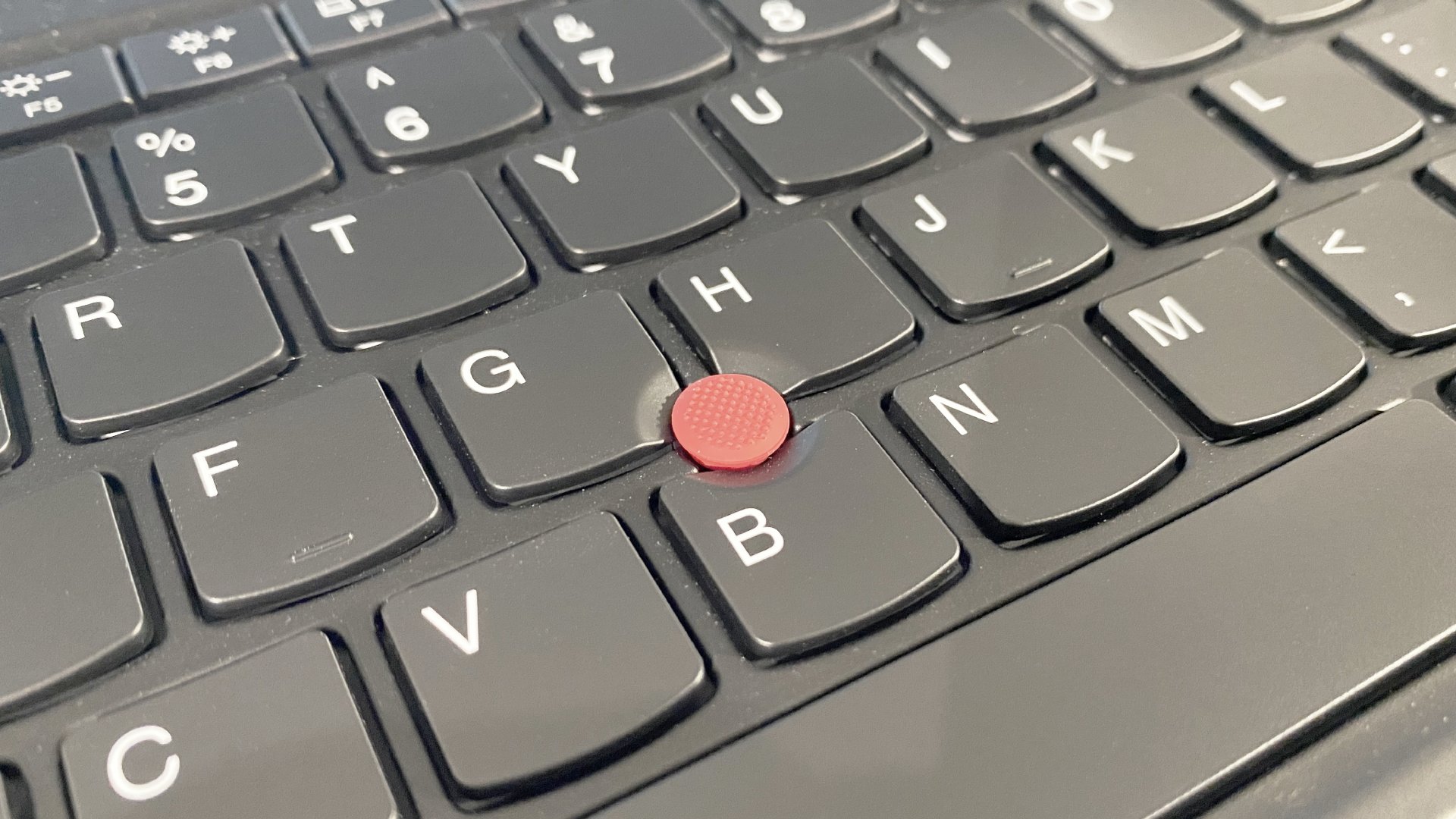
Buy it if...
- You need a portable workstation, not just a laptop
- You appreciate excellent build quality
- You want true all-day battery life
Don't buy it if...
- You need maximum GPU and NPU performance
- Screen quality is a high priority
- You want maximum bang for your buck
Also consider
out of 10
Lenovo's latest 16-inch mobile workstation, the Lenovo Thinkpad P1 Gen 7, is a beautiful slab of quality engineering with a strong professional feature set and stellar battery life. But it's incredibly expensive and offers mediocre GPU and NPU performance, especially for the price.

Jeremy has been writing about technology since the 90nm Netburst era (Google it!) and enjoys nothing more than a serious dissertation on the finer points of input lag and overshoot followed by a forensic examination of advanced lithography. Or maybe he just loves machines that go 'ping!'. He has written for a variety of publications, including TechRadar, The Independent, Digital Camera World, T3, PC Gamer, GamesRadar+.
You must confirm your public display name before commenting
Please logout and then login again, you will then be prompted to enter your display name.
